Decorative and functional mirrors can greatly enhance the appeal and functionality of any room. However, with the multitude of options available, choosing the right mirror can be overwhelming. To help you make the best choice, here are a few types of mirrors and suggestions on where to place them.
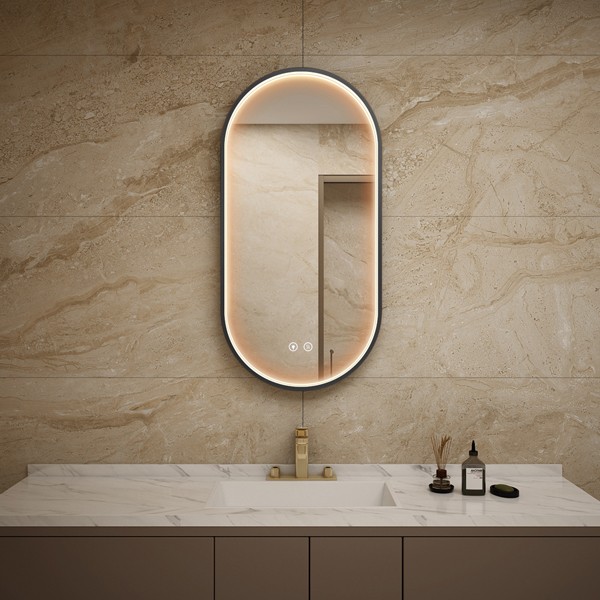
Fundamentals of mirror types
Mirrors are a crucial part of our everyday routines, providing a range of functions from personal care to road safety. By understanding the key components, including materials and shapes, you can find inspiration for new designs.
Materials and Reflective Surfaces
The mirror's core is formed by a smooth, reflective surface.
In the past, mirrors were made from shiny metal, but now, most are made of glass coated with a reflective layer of silver or aluminum. The level of reflection is determined by the integrity and smoothness of this coating.
The reflective layer is topped with another layer to prevent corrosion of the silver layer. In the past, this layer often contained toxic materials such as copper and lead. However, modern silver mirrors now feature an eco-friendly layer, making them a copper-free option.
For long-lasting protection in potentially damaging environments, like bathrooms, marine vessels, and boats, high-quality mirrors utilize ethoxylate resin as a protective layer.
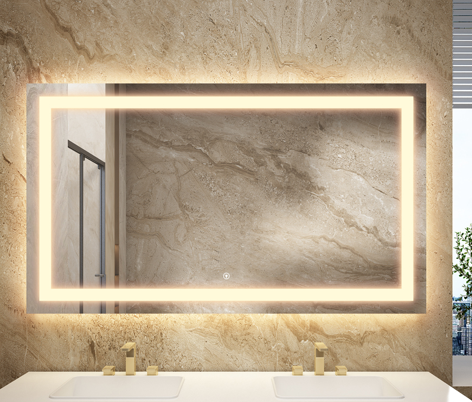
Basic Shapes and Designs
Struggling to choose the right mirror? Don't worry, we'll break down the different types and their specific purposes to help you make the right decision. Here are the three basic varieties you should know about.
-
Plane mirrors: Traditional mirrors are often flat and rectangular, reflecting images in their natural proportions and orientations, as you're probably accustomed to.
-
Convex mirrors:This design features outward protrusions to increase your field of vision. You'll commonly find this style in items like side mirrors or sharp road bends, designed to enhance visibility and minimize accidents.
-
Concave mirrors: These bend inward to focus light and images, making them perfect for tasks that require magnified or concentrated reflection, such as in beauty mirrors.
When choosing a mirror, remember its purpose. Mirrors have many uses, like assisting with self-reflection or enhancing driving safety.
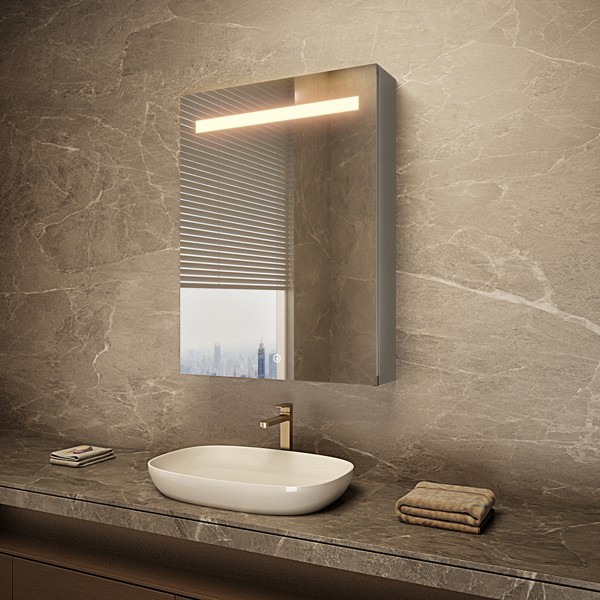
Mirror Types By Different Terms
Build on your understanding of mirrors and dive into learning about different types and specific uses.
Convex and Concave Mirrors
Convex and concave mirrors have different shapes, creating distorted images that may change the perceived size of objects. While convex mirrors have a wider scope of vision and are commonly used as rearview mirrors, concave mirrors contain inward curves that can focus light onto a single point. Although they also produce distorted reflections, they tend to be larger in size compared to convex mirrors.
-
Convex Mirror Applications:
-
Rearview and side-view mirrors in cars
-
Security mirrors in stores
-
Security purpose for road bend
-
Concave Mirror Applications:
-
Reflecting telescopes
-
Shaving or makeup mirrors
-
Dental mirrors
Functional Mirrors
These dual-purpose mirrors, also called two-way or one-way mirrors, offer the perfect solution for maintaining privacy while providing observation capabilities. On one side, they function as ordinary mirrors, but on the other, they act as windows, enabling discreet surveillance without detection. These versatile mirrors are essential for preserving confidentiality and enhancing security in sensitive spaces.
-
Two-Way Mirror Applications:
-
Retail loss prevention areas
-
Surveillance in police stations
Keep your bathroom mirror free of fog and enjoy a clear reflection even after a steamy shower with our specialized antifog mirrors. Thanks to the etch foil heater behind the mirror, condensation won't accumulate, making it easy and efficient to use. Perfect for busy mornings when every minute counts!
-
Anti-fog Mirror Applications:
-
Bathrooms
-
Places with tremendous amounts of mist
Choose polycarbonate mirrors for their durability, lightweight design, and impact resistance. They are the perfect solution for safety-conscious environments or busy areas that are prone to accidents, as they utilize polycarbonate sheets instead of traditional glass.
Use these versatile mirrors in schools, prisons, public restrooms, and outdoor settings.
-
Polycarbonate Mirror Applications:
-
high-traffic areas prone to accidents
-
schools, prisons, public restrooms, and outdoor settings.
ADA-compliant mirrors are thoughtfully designed to promote inclusivity and independence in public facilities, making them accessible to individuals with disabilities. Positioned at a lower height and often featuring a tilt function, these mirrors cater to people of all abilities and statures, ensuring easy self-viewing. This commitment to accommodating all users is reflected in the design of ADA-compliant mirrors.
-
ADA Mirror Applications:
-
Facilities for individuals with disabilities are necessary in public venues.
-
The hotel rooms are designed for individuals with disabilities.
LED lighting is a common feature in vanity mirrors, providing a practical solution for proper lighting. The light can even be adjusted to your liking. These mirrors are typically placed on dressers or vanity cabinets.
-
Discover the best applications for your vanity mirror.:
-
Makeup, skincare routines, up-close reflection.
-
Dressing room
Makeup mirrors offer features such as magnification and adjustable lighting to enhance visibility for detailed cosmetic purposes. These devices come in several forms, including handheld, tabletop, and wall-mounted models, often with LED lights that mimic natural light. Providing precision for flawless makeup execution, these mirrors are a staple on vanities and in beauty routines for beginners as well as experts.
Makeup Mirror Applications:
Dressing room
Bathroom
Vanities table, dressers.
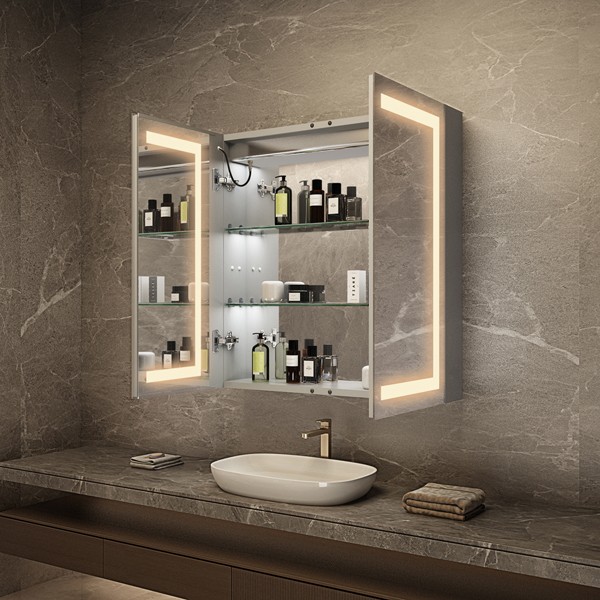
Mirrors without Reversal
For an accurate reflection with normal proportions and orientation, non-reversing mirrors are a perfect choice. Known as true mirrors, they provide a true image that lets you see yourself as others would. These mirrors are essential for places that require a realistic representation of appearance.
-
Non-Reversing Mirror Applications:
-
The product presents an improved perspective on self-appearance by incorporating the viewpoint of another person, streamlining the process of applying makeup and styling hair.
-
Consider using Psychological Research for studies on self-awareness and body image, as it provides a unique perspective that can influence one's perception and understanding of oneself.
-
This therapy is beneficial for patients who are working on facial expressions, mouth movements, and speech, as it accurately reflects how others may perceive these actions.
-
Discover the world of art and photography with the use of non-reversing mirrors. These mirrors are essential for studying light and perspective, and they allow for images to be captured without the lateral inversion often found in traditional mirrors.
-
For a more accurate idea of how garments fit and look, dressing rooms offer a perspective from an observer's point of view, potentially improving the shopping experience.
-
Educational Tools: They can be used to teach concepts of symmetry, reflection, and geometry in a more intuitive way.
-
Professional Development: Ideal for individuals in roles where self-presentation is important, such as public speakers, performers, and salespeople, to evaluate and enhance their public image.
Non-reversing mirrors provide a valuable, true-to-life perspective that can be beneficial in different settings where understanding how others see you is important.
Decorative and Practical Mirror Uses
Mirrors without Reversal
When choosing a mirror, consider non-reversing mirrors for accurate, realistic reflections with normal proportions and orientation. Often called true mirrors, these provide a genuine image that reflects how others see you. They're ideal for locations where a true representation of appearance is crucial.
-
Non-Reversing Mirror Applications:
-
This product offers a fresh viewpoint on personal appearance by considering the perspective of others, making it easier to apply makeup and style hair.
-
Explore the impact of Psychological Research on self-awareness and body image, as it offers a distinct viewpoint that can shape personal beliefs and self-perception.
-
This treatment can be helpful for individuals improving facial expressions, mouth movements, and speech. It provides an accurate reflection of how others may perceive these actions.
-
Uncover the realm of art and photography using non-reversing mirrors. These crucial mirrors aid in studying light and perspective, and enable capturing images without the lateral inversion commonly found in traditional mirrors.
-
Gain a better understanding of garment fit and appearance by using dressing rooms, where you can take on the perspective of an observer and potentially enhance your shopping experience.
-
Educational Tools: They can be used to teach concepts of symmetry, reflection, and geometry in a more intuitive way.
-
Improve your public image with our Professional Development course, designed for those in roles where self-presentation is crucial, including public speakers, performers, and salespeople. Gain valuable insights and skills to enhance your image and leave a lasting impression.
Non-reversing mirr
Interior Design and Ambiance
Transform your room and elevate your home decor by integrating various mirror types.
Enhance your living space with a stylish and functional decorative mirror, like an oversized one with a beveled frame.
Create the illusion of depth and expand the feeling of space in smaller rooms by using either mirrored walls or a collection of framed mirrors.
-
Size: Think about the mirror's size in relation to your space to create a balanced look.
-
Decor: Select mirror frames that complement and enhance the theme of your room.
-
LED Light:Discover the power of LED lighting technology in creating a cozy atmosphere. With features such as RGB backlights and CCT changeable lighting sources, you can easily achieve the perfect ambiance for your space.
Mirror Functionality in Spaces
Mirrors are more than just decorative pieces; they play a vital role in the practicality of a room. In the bathroom, a strategically placed bathroom mirror is necessary for everyday grooming activities. For added convenience, consider a wardrobe mirror placed inside your wardrobe for trying on clothes without leaving the space. For bedrooms or dressing rooms, opt for a custom-sized wall mirror that provides a complete head-to-toe reflection - full-length or over-the-door mirrors are perfect options. In narrow hallways or entranceways, a mounted mirror can serve as a quick last-minute check while also making the area appear more spacious.
-
Mirror Functionality:
Illuminate your bathroom with fog-resistant or well-lit mirrors for enhanced clarity.
-
Consider choosing mirrors with built-in LED lights if the lighting in your wardrobe is inadequate for changing clothes.
-
Full-Length Mirrors: Ensure they are positioned for a complete, head-to-toe view.
-
Utilize Over-The-Door Mirrors for a space-saving solution without sacrificing the full view.
Discover the valuable and authentic perspective that ors provide, benefiting your understanding of how others see you in various settings.
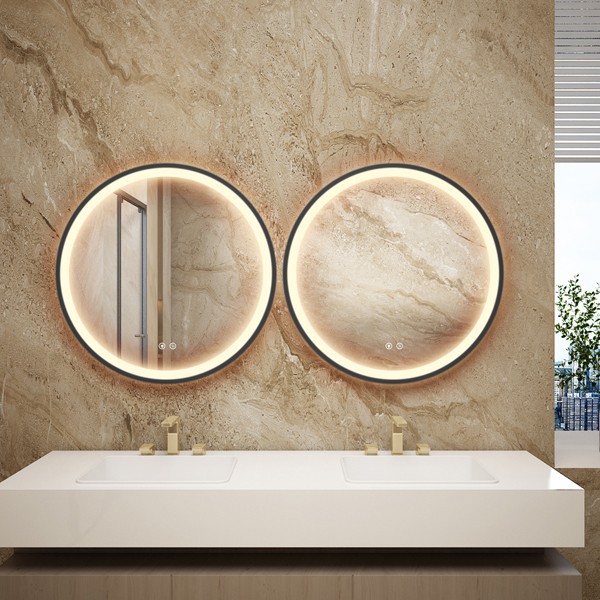
Decorative and Practical Mirror Uses
Custom Mirror Solutions and Innovations
When it comes to adding reflective surfaces to your space, custom mirror solutions can provide a personalized touch to your aesthetic.
Personalized and Bespoke Mirrors
Customized mirrors give you the opportunity to add your own personal touch to any room. You can choose from a variety of styles, such as a statement-making mirrored table or a classic full-length mirror with chic features like an easel or cheval design fastened with swivel screws. These bespoke mirrors can be customized to fit your desired size and shape.
A custom mirror can also transform functional areas; for example, adding a mirrored backsplash not only brings in more light but also creates the illusion of more space in your kitchen.
Mirror Innovations and Technology
Modern LED bathroom mirrors now feature advanced mirror technology, including touch and motion-activated switches, high-quality lighting with adjustable color temperature, anti-fog system, Bluetooth connectivity, built-in speakers, and LCD displays for time and weather.
When it comes to personal grooming, magnified mirrors add extra detail while mirrors made to prevent double reflection offer a more accurate image.
These advancements in technology allow for custom mirrors that seamlessly combine style and practicality, providing more than just a mirror.
Frequently Asked Questions
Discover answers to frequently asked questions about the various types of mirrors, their purposes, and their uses in homes in this section.
What are the different types of glass mirrors available?
The different forms of glass mirrors serve a specific purpose and also enhance the aesthetic of your space. There are decorative mirrors, bathroom mirrors, and full-length mirrors available for your use.
How do convex mirrors differ in function and design?
Convex mirrors are specifically designed to protrude outward, providing a broader viewing area. They are often utilized for ensuring security and safety by monitoring hard-to-see areas.
What are the specific uses for mirrors in a household?
Household mirrors serve various purposes, including grooming with vanity mirrors, outfit checks with full-length mirrors, and enhancing room ambiance with decorative mirrors.
Can you explain the differences between concave and convex mirrors in physics?
Concave mirrors reflect light inward to a focal point in physics, creating larger images, while convex mirrors disperse light outward, offering a reduced, broad view.
What is the most prevalent type of mirror found in residential spaces?
The flat mirror, also known as a plane mirror, is a popular choice for home use due to its accurate reflection of images. It can often be found in bathrooms and bedrooms.
 Shanghai Divas Glass Co.,Ltd
Shanghai Divas Glass Co.,Ltd
